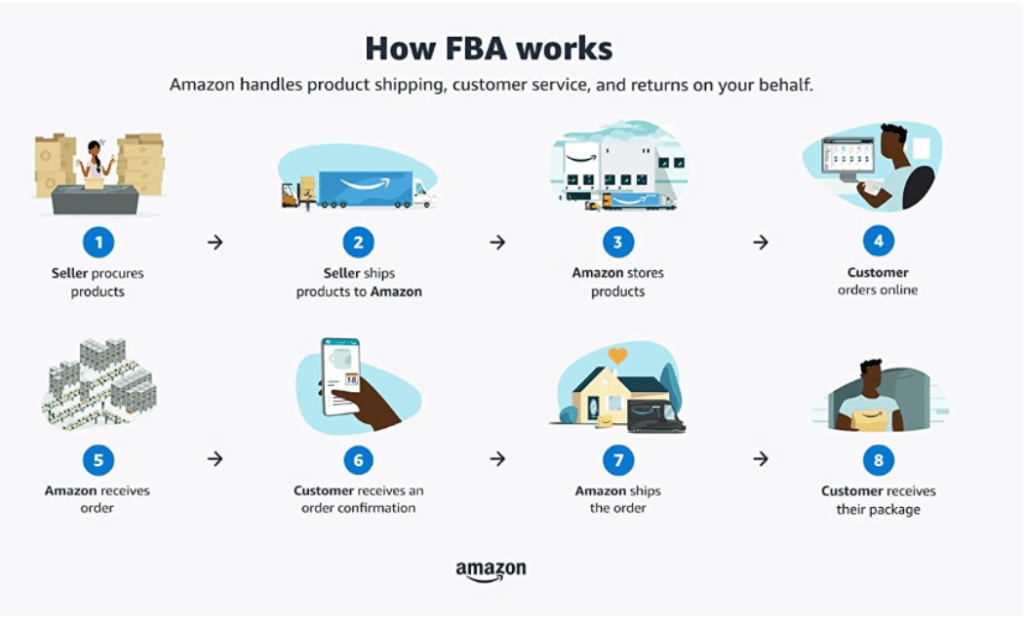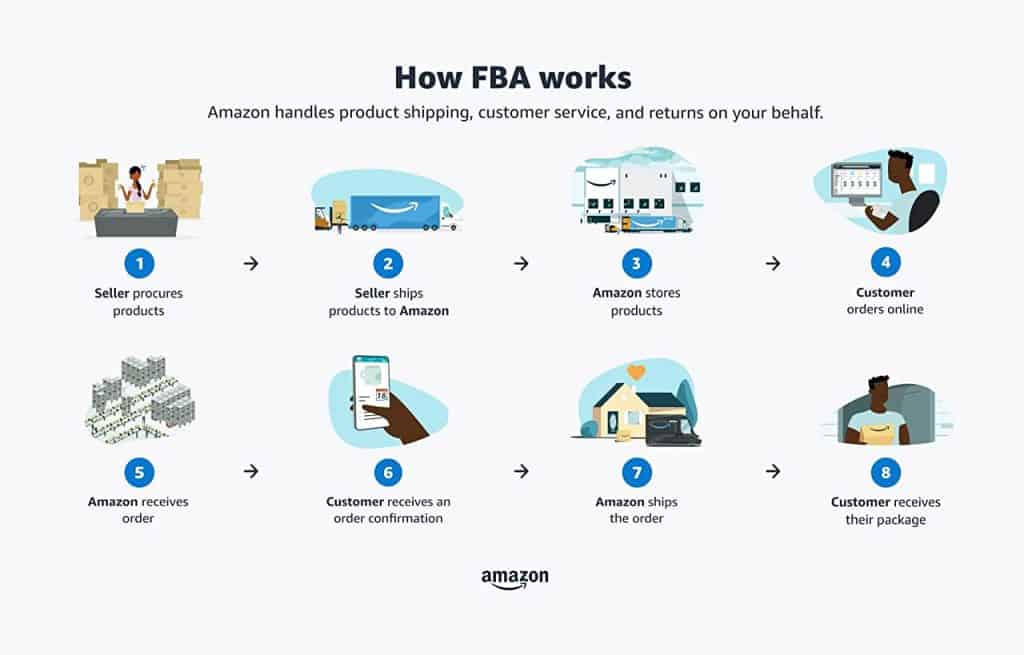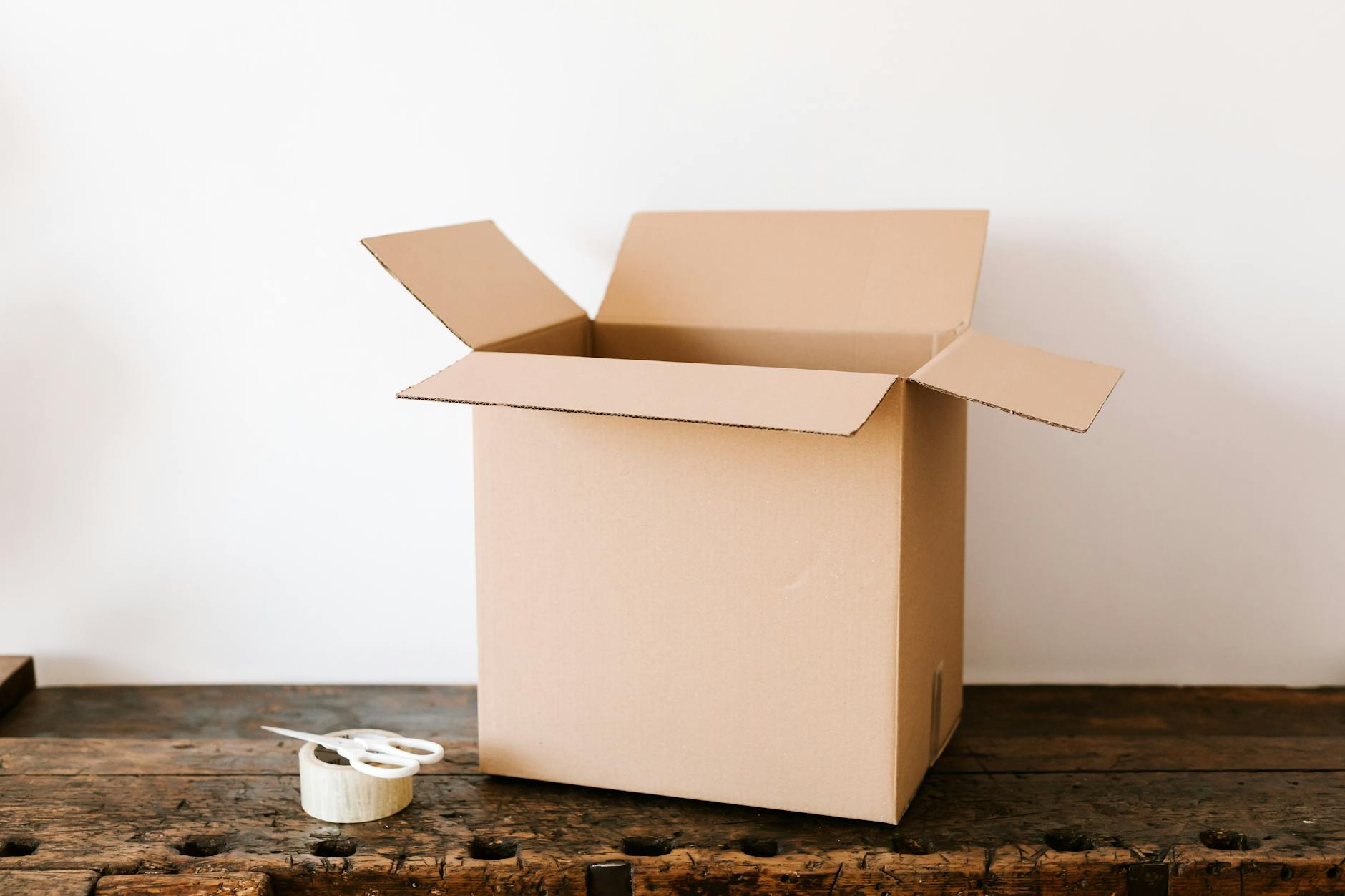Unveil the secrets of Amazon FBA in this comprehensive guide – from starting your business to maximizing profits effortlessly.
Table of Contents
- Introduction to Amazon FBA
- How Amazon FBA Works
- The Benefits of Using Amazon FBA
- Understanding Amazon FBA Fees
- Starting an Amazon FBA Business
- Success Stories from Amazon FBA Sellers
- Challenges of Running an Amazon FBA Business
- Tips and Tricks for Amazon FBA
- Is Amazon FBA Right for You?
- Conclusion
- FAQs
Introduction to Amazon FBA
In today’s digital age, many entrepreneurs are turning to online platforms to sell their products. One popular method of selling goods online is through Amazon FBA, but what exactly does that mean?
What FBA Stands For
Amazon FBA stands for Fulfillment by Amazon. It’s a special service provided by Amazon that allows sellers to store their products in Amazon’s warehouses. This way, when a customer buys something, Amazon takes care of packing and shipping the item to the customer.
The Basics of Amazon FBA
So, how does Amazon FBA work? Well, it’s pretty simple! Sellers send their products to Amazon’s warehouses, where Amazon stores them until someone buys them. Once a purchase is made, Amazon packs and ships the product to the customer on the seller’s behalf. This makes selling online a lot easier for many business owners!
How Amazon FBA Works
Amazon FBA, which stands for Fulfillment by Amazon, is a service that helps sellers store their products in Amazon’s fulfillment centers. Let’s break down the steps of how Amazon FBA works in a way that’s easy to understand.
Sending Products to Amazon
When a seller signs up for Amazon FBA, they ship their products to Amazon’s warehouse. Amazon takes care of storing the items until they are sold.
Amazon Stores and Packs
Amazon stores the products in their warehouse and when an order is placed, they pack and ship the item to the customer. This saves the seller time and effort.
Delivery to Customers
Once the product is packed, Amazon takes care of shipping it to the customer’s doorstep. This ensures quick and reliable delivery for the buyer.
Customer Service
Amazon also handles customer inquiries, returns, and refunds for products fulfilled through FBA. This gives sellers peace of mind knowing that customer service is managed by Amazon.
The Benefits of Using Amazon FBA
Amazon FBA offers a plethora of advantages for business owners looking to streamline their online selling processes. Let’s explore some of the key benefits of utilizing Amazon FBA for your business.

Image courtesy of www.sellerapp.com via Google Images
Easy for Sellers
One of the most significant perks of using Amazon FBA is how it simplifies the selling process for business owners. With FBA, sellers can offload the hassle of storage, packing, shipping, and customer service to Amazon. This means that you can focus more on sourcing quality products and growing your business while Amazon takes care of the logistical aspects.
Trust in Amazon
Customers trust Amazon as a reliable and reputable online marketplace. By using Amazon FBA, your products benefit from the trust and credibility associated with the Amazon brand. This trust can translate into increased sales and customer loyalty, as shoppers feel more confident buying products that are fulfilled by Amazon.
Understanding Amazon FBA Fees
When you sell products using Amazon FBA, there are some fees you need to be aware of. Let’s break down what these fees are and why they are charged.
Types of Fees
Amazon FBA charges different types of fees to sellers. These fees include storage fees, fulfillment fees, referral fees, and more. Storage fees are charged for storing your products in Amazon’s warehouses, while fulfillment fees cover the cost of picking, packing, and shipping your items to customers. Referral fees are charges based on a percentage of the sale price of your product. Understanding these fees is crucial to knowing how much it will cost you to use Amazon FBA.
Why Fees are Charged
Amazon charges these fees to cover the costs of providing the services they offer through FBA. These fees help Amazon maintain its warehouses, pay for shipping costs, provide customer service, and more. By charging these fees, Amazon can ensure that sellers have access to a reliable and efficient fulfillment service. While it may seem like a lot of money, these fees are necessary to keep the FBA system running smoothly.
Starting an Amazon FBA Business
So, you’re interested in starting your own Amazon FBA business? That’s fantastic! Let’s break down the process into simple steps that you can easily follow.

Image courtesy of www.yaguara.co via Google Images
Creating a Seller Account
The first step in launching your Amazon FBA business is to create a seller account on Amazon. This is where you will manage your product listings, sales, and customer interactions. Simply visit Amazon’s website, click on the “Sell” tab, and follow the prompts to set up your account. It’s as easy as that!
Choosing Products to Sell
Now comes the exciting part – choosing the products you want to sell through Amazon FBA. Think about what interests you and what items you believe will be popular with customers. You can start small with a few products to test the waters before expanding your inventory. Remember, it’s essential to pick products that are in demand and have the potential to generate sales.
| Section | Information |
|---|---|
| What is Amazon FBA? | Amazon FBA (Fulfillment by Amazon) is a service provided by Amazon that allows third-party sellers to store their products in Amazon’s fulfillment centers. Amazon then picks, packs, ships, and provides customer service for these products. |
| How does it work? | Sellers send their products to Amazon’s fulfillment centers where they are stored until they are sold. When a customer places an order, Amazon fulfills the order by picking the product from its warehouse, packing it, and shipping it to the customer. |
| Benefits of Amazon FBA | 1. Prime Eligibility: Products fulfilled by Amazon are eligible for Prime shipping, which can help increase sales. 2. Customer Service: Amazon handles customer inquiries and returns, saving sellers time. 3. Global Reach: Amazon FBA allows sellers to tap into Amazon’s extensive global customer base. |
| Costs | Amazon charges fees for using FBA, including storage fees, fulfillment fees, and other charges. The fees vary depending on the size and weight of the product, as well as storage duration. |
| Getting Started | To start using Amazon FBA, sellers need to create an Amazon seller account and then enroll in the FBA program. They can then send their products to Amazon’s fulfillment centers and start selling on the platform. |
| Tips for Success | 1. Optimize Listings: Make sure your product listings are accurate and optimized for search. 2. Monitor Inventory: Keep track of your inventory levels to avoid stockouts. 3. Offer Competitive Pricing: Stay competitive by pricing your products competitively. 4. Provide Excellent Customer Service: Respond promptly to customer inquiries and issues to build trust with buyers. |
Success Stories from Amazon FBA Sellers
In this section, we will explore some real-life success stories of individuals who have found great success by utilizing Amazon FBA to run their businesses.
Real-life Examples
One inspiring success story comes from Sarah, a stay-at-home mom who decided to start her own online business through Amazon FBA. Sarah carefully researched popular products and identified a gap in the market for organic baby products. By sourcing high-quality organic baby products and leveraging Amazon FBA’s storage and delivery services, Sarah quickly grew her business. Within a year, she was able to quit her job and focus on her Amazon FBA business full-time.
Another success story is from Mark, a college student who was looking for a way to earn extra income. Mark started his own brand of customizable phone cases and used Amazon FBA to handle all the logistics. With hard work and dedication, Mark was able to scale his business and generate a steady stream of passive income while still focusing on his studies.
These are just a few examples of how ordinary individuals have turned their entrepreneurial dreams into reality with the help of Amazon FBA. By leveraging the convenience and reach of Amazon’s platform, sellers like Sarah and Mark have been able to achieve financial independence and build successful businesses.
Challenges of Running an Amazon FBA Business
When you decide to run an Amazon FBA business, you may encounter some challenges along the way. One common problem that many sellers face is fierce competition. With so many people selling products on Amazon, it can be tough to stand out and attract customers to your listings. Another issue is managing inventory effectively. You need to keep track of how much stock you have, when to reorder, and how to handle returns or damaged items.

Image courtesy of www.amazon.com · In stock via Google Images
Finding Solutions
Despite these challenges, there are ways to address them and improve your chances of success. To tackle competition, you can focus on finding a niche market or offering unique products that aren’t readily available on Amazon. By doing this, you can carve out your own space and attract customers who are specifically looking for what you offer.
When it comes to managing inventory, you can use tools and software to help you track sales, monitor stock levels, and automate reorder processes. This way, you can stay on top of your inventory and avoid running out of stock at crucial times. Additionally, setting up clear processes for returns and refunds can streamline your operations and keep customers satisfied.
Tips and Tricks for Amazon FBA
When starting out with Amazon FBA, it’s helpful to gather as much information as possible to increase your chances of success. Here are some tips and tricks that can guide you through your FBA journey, inspired by insights shared in Amazon FBA communities on Reddit.
Learning from Others
If you’re new to Amazon FBA, one of the best ways to learn the ropes is to follow discussions on platforms like Reddit. Many experienced sellers share their stories, successes, and challenges, providing valuable insights that can help you avoid common pitfalls and make informed decisions. Take the time to read through these threads to gain a deeper understanding of how the FBA business works and how you can navigate through it successfully.
Smart Strategies
One of the key strategies shared by successful Amazon FBA sellers is to focus on product research. Before choosing a product to sell, take the time to analyze market trends, competition, and customer demand. Look for products with high demand and low competition to increase your chances of success. Additionally, consider optimizing your product listings with relevant keywords and high-quality images to attract more customers.
Another smart strategy is to continually monitor and adjust your pricing to stay competitive in the market. Regularly evaluate your costs and profit margins to ensure that you’re pricing your products effectively. Utilize Amazon’s tools like the Seller Central dashboard to track your sales performance and make data-driven decisions to improve your business.
By implementing these tips and tricks, you can set yourself up for success in the competitive world of Amazon FBA. Remember to stay proactive, stay informed, and continuously adapt your strategies to stay ahead of the curve.
Is Amazon FBA Right for You?
In this section, we will explore whether starting an Amazon FBA business is a good fit for you. Let’s weigh the pros and cons to help you make an informed decision.

Image courtesy of www.brandbuilderuni.com via Google Images
Pros and Cons
First, let’s look at the positive aspects of starting an Amazon FBA business. One major benefit is that Amazon takes care of storing, packing, and shipping your products, which can save you time and hassle. This means you can focus on growing your business rather than managing logistics.
Additionally, Amazon is a trusted platform with millions of customers, which can help you reach a larger audience and potentially increase your sales. The credibility and convenience of Amazon FBA can give your business a competitive edge in the online marketplace.
On the flip side, there are some drawbacks to consider. One of the main concerns is the fees associated with using Amazon FBA. These fees can cut into your profits and may impact your pricing strategy. It’s essential to understand the cost structure and how it will affect your bottom line.
Another challenge is the level of competition on Amazon. With millions of sellers vying for attention, it can be tough to stand out and attract customers to your products. You’ll need to invest time and effort into marketing and optimizing your listings to stay ahead of the competition.
Thinking Long-Term
Before diving into an Amazon FBA business, it’s crucial to think about your long-term goals. Consider whether selling on Amazon aligns with your future plans and aspirations. Are you looking for a flexible side hustle or aiming to build a full-time business?
Reflect on your strengths and interests to determine if Amazon FBA is a good fit for your skills and passion. Success in FBA requires dedication, perseverance, and a willingness to adapt to changing market dynamics. Assess whether you have the drive and commitment to navigate the challenges and seize the opportunities that come with running an online business.
Conclusion
Throughout this guide, we’ve explored the world of Amazon FBA and how it can benefit online sellers. From understanding what FBA stands for to learning about the different fees involved, we’ve covered a lot of ground. Now, let’s wrap up our discussion with a quick recap of the key points.
Firstly, Amazon FBA, which stands for Fulfillment by Amazon, allows sellers to store their products in Amazon’s warehouses and have them packed and shipped directly to customers. This service simplifies the selling process and builds trust among buyers.
Next, we delved into the benefits of using Amazon FBA, including how it makes online selling easier for business owners and how customers’ trust in Amazon can lead to increased sales. Additionally, we explored the various fees associated with FBA and why they are charged.
If you’re considering starting your own Amazon FBA business, we discussed steps like creating a seller account and choosing products to sell. And we drew inspiration from success stories to motivate and guide you on your entrepreneurial journey.
While there are challenges to running an Amazon FBA business, such as competition and inventory management, finding solutions and learning from others can help you navigate these obstacles. Seeking out tips and tricks from experienced sellers can also give you an edge.
As you reflect on whether Amazon FBA is right for you, remember to weigh the pros and cons, think about your long-term goals, and consider how FBA aligns with your aspirations.
In conclusion, Amazon FBA presents a valuable opportunity for aspiring entrepreneurs to enter the world of online selling with the support of a trusted platform. Whether you’re just starting out or looking to expand your business, exploring the possibilities of Amazon FBA could be a rewarding venture worth considering.
FAQs
Can Kids Start an Amazon FBA Business?
Starting an Amazon FBA business usually requires individuals to be at least 18 years old. However, kids can still learn about it and plan for the future if they are interested in becoming entrepreneurs. They can start by understanding how the business works, learning about different product categories, and setting goals for the future.
How Much Money Can You Make with Amazon FBA?
The amount of money one can make with Amazon FBA varies depending on various factors such as the products being sold, pricing strategies, and competition. While some sellers make a substantial income, it’s essential to remember that success in business requires hard work, dedication, and smart decision-making. Understanding the market and continually improving your business can lead to increased earnings over time.
Is It Easy to Sell Products on Amazon FBA?
Selling products on Amazon FBA can be relatively straightforward once you understand the process. By creating a seller account, selecting products to sell, sending them to Amazon, and managing your inventory and sales, you can start your journey as an online seller. While there may be challenges along the way, educating yourself, seeking advice from experienced sellers, and staying committed to your goals can increase your chances of success.
